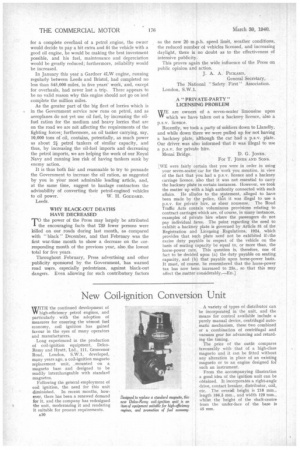New Coil-ignition Conversion Unit
Page 40

If you've noticed an error in this article please click here to report it so we can fix it.
WITH the continued development of VW high-efficiency petrol engines, and particularly with the adoption of measures for ensuring the utmost fuel economy, coil ignition has gained favour in the eyes of many operators and manufacturers.
Long experienced in the production of coil-ignition equipment, DelcoRemy and Hyatt, Ltd., ill, Grosvenor Road, London, S.W.I, developed, many years ago, a coil-ignition magneto replacement unit, mounted on a magneto base and designed to be readily interchangeable with standard magnetos.
Following the general employment of coil ignition, the need for this unit diminished. In recent months, however, there has been a renewed demand for it, and the company has redesigned the unit, modernizing it and rendering it suitable for present requirements.
A.30
A variety of types of distributor can be incorporated, in the unit, and the means for control available include a purely manual device, centrifugal automatic mechanism, these two combined or a combination of centrifugal and vacuum gear for advancing and retarding the timing.
The price of the outfit compares favourably with that of a high-class magneto and it can be fitted without any alteration in place of an existin& magneto or to an engine designed for such an instrument.
From the accompanying illustration a good idea of the ignition unit can be obtained. It incorporates a right-angle drive, contact breaker, distributor, coil, etc. The overall height is 218 mm., length 186.5 mm., and width 129 mm., whilst the height of the shaft-centre from the under-face of the base is 45 mm.




























































